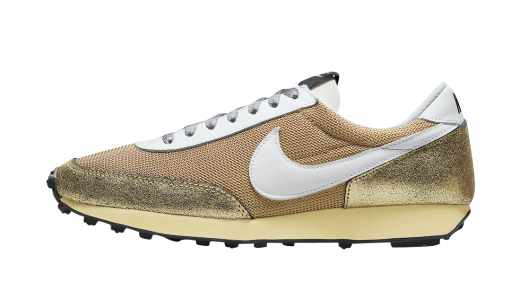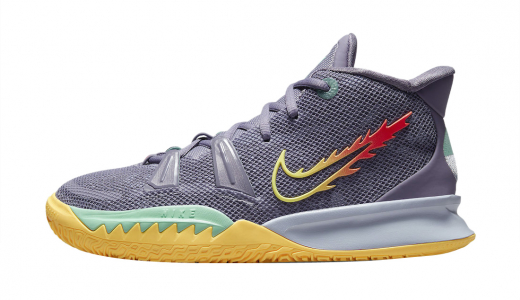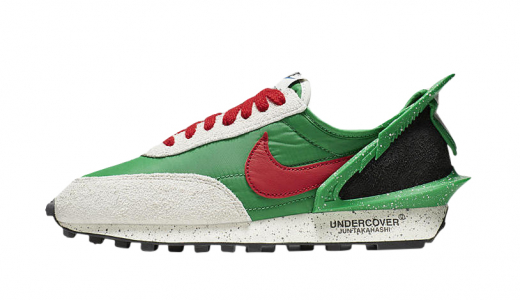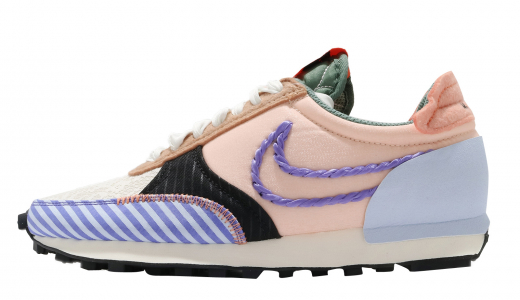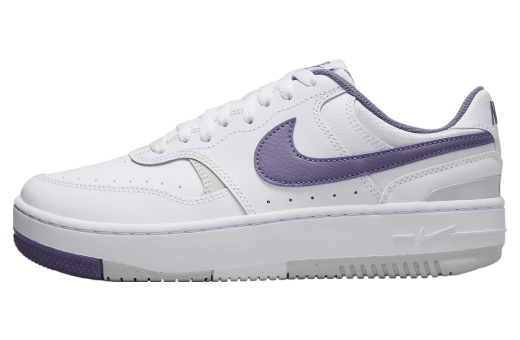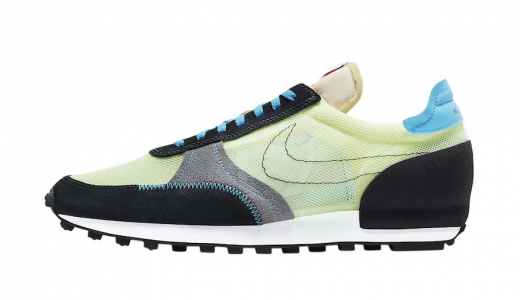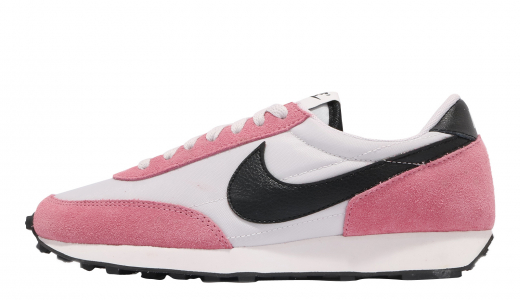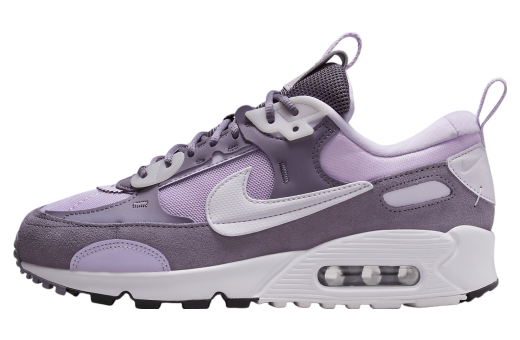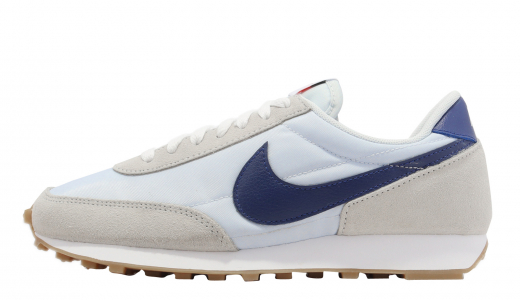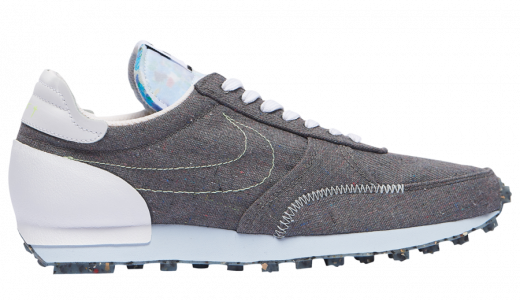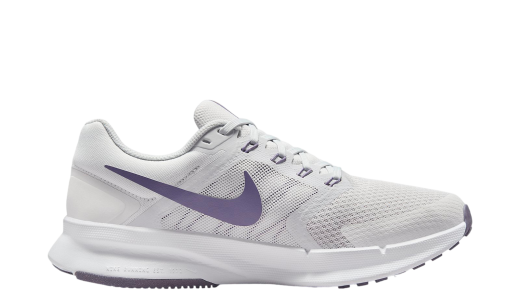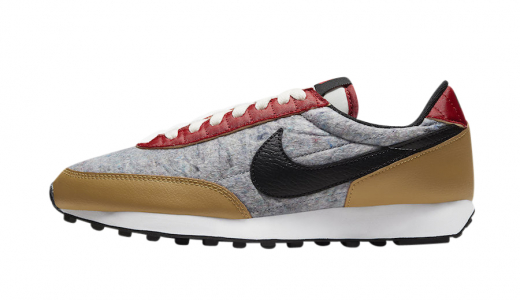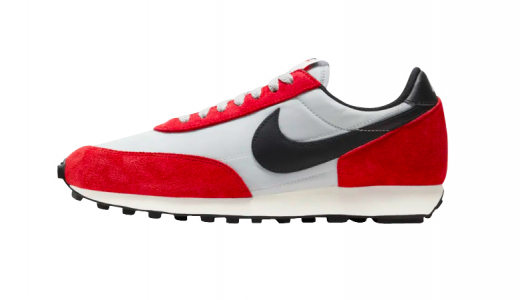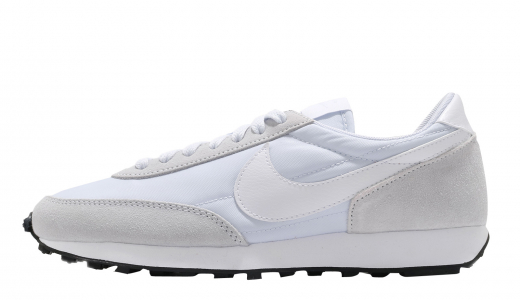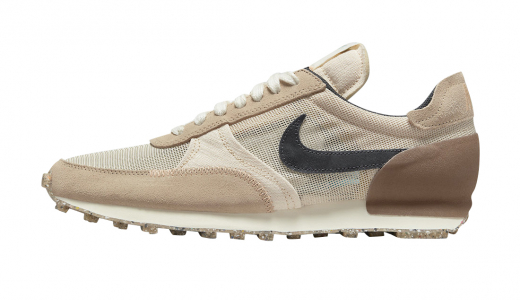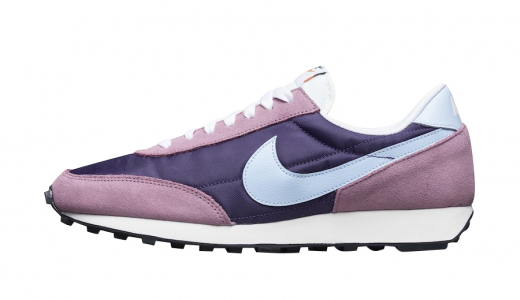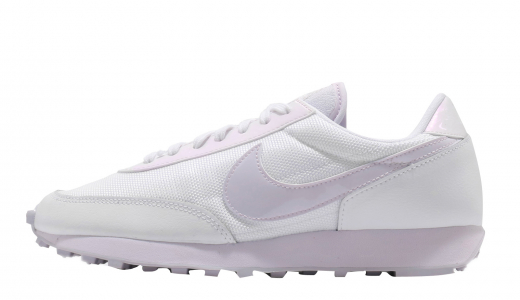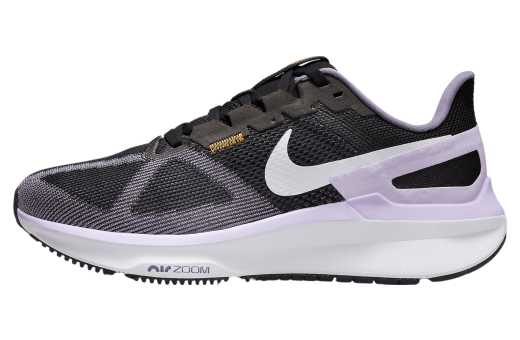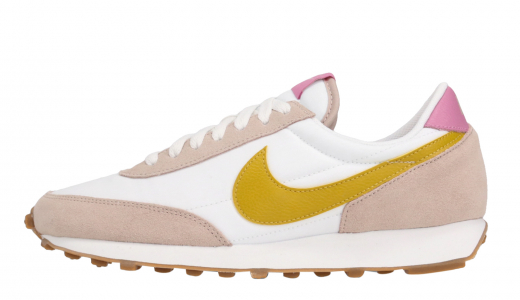Nike Daybreak
The Nike Daybreak is a testament to the enduring appeal of retro style and the relentless evolution of sneaker innovation. First released in 1979, the Daybreak has stood the test of time thanks to its classic aesthetic and comfortable design. The shoe features a lightweight nylon upper with suede overlays that provide both durability and a vintage flair. A foam midsole offers cushioning without adding unnecessary weight, making the Daybreak a popular choice for both casual wear and athletic activities. The iconic waffle outsole, a hallmark of early Nike running shoes, ensures superior traction and grip, enhancing the overall versatility of the sneaker.
Over the years, Nike has reimagined the Daybreak with various updates and colorways to keep it relevant in the ever-changing sneaker landscape. Collaborations with designers and brands, such as the partnership with Undercover, have introduced new iterations that blend contemporary fashion trends with the shoe’s timeless design elements. Despite these modern twists, the essence of the original Daybreak remains intact, appealing to both nostalgic purists and a new generation of sneaker enthusiasts. The Nike Daybreak stands as a bridge between the past and the future, encapsulating the brand's commitment to innovation while honoring its rich heritage.
History of Nike Daybreak
The Nike Daybreak sneakers have a rich and storied history that spans several decades, capturing the essence of athletic and street fashion from the late 20th century to modern times. Born out of a period of pioneering innovation in sports footwear, the Daybreak has evolved into an iconic silhouette beloved by sneaker enthusiasts and casual wearers alike. This comprehensive account delves into the origins, evolution, and lasting impact of the Nike Daybreak.
Origins in the 1970s
The story of the Nike Daybreak begins in the late 1970s, a transformative era for Nike as the company began to establish itself as a dominant player in the athletic footwear market. Founded in 1964 as Blue Ribbon Sports by Bill Bowerman and Phil Knight, the company rebranded to Nike in 1971, named after the Greek goddess of victory, symbolizing the brand's aspiration to empower athletes.
During this period, Nike focused on innovating running shoes, driven by Bowerman's experience as a track coach at the University of Oregon. His obsession with creating the perfect running shoe led to the development of the Nike Waffle Trainer in 1974, with its revolutionary waffle outsole providing superior grip and cushioning. This innovation paved the way for subsequent models in Nike's running line.
The Nike Daybreak was introduced in 1979, a pivotal year marked by creative experimentation in design and technology. The shoe featured a nylon and suede upper that combined durability with lightweight construction, making it ideal for long-distance runners. The outsole, inspired by the Waffle Trainer, offered excellent traction and cushioning, crucial for athletes seeking performance enhancements. The Daybreak's simple, yet effective design made it an instant favorite among runners.
Design and Technology
One of the standout features of the Nike Daybreak was its construction. The nylon upper, often combined with suede overlays, provided a breathable yet sturdy structure. This combination of materials ensured that the shoe was not only lightweight but also durable enough to withstand the rigors of competitive running.
The midsole was crafted from EVA (ethylene vinyl acetate) foam, a material known for its shock-absorbing properties. This innovation significantly improved the comfort and performance of the shoe, allowing runners to achieve better times and reduce the risk of injury. The waffle-patterned rubber outsole offered optimal traction on various surfaces, enhancing the shoe's versatility.
The design of the Nike Daybreak was minimalist yet functional. It featured a low-profile silhouette with a simple lacing system, ensuring a snug fit. The iconic Nike Swoosh adorned the sides, a testament to the brand's growing identity and global recognition. The Daybreak was available in a range of colorways, catering to individual preferences and adding a touch of style to the athlete's gear.
Cultural Impact in the 1980s and 1990s
As the Nike Daybreak made its way into the early 1980s, it began to transcend its roots as a performance running shoe, gradually finding a place in the burgeoning streetwear and casual fashion scenes. The 1980s were a time when athletic footwear started gaining prominence outside of sports. Influenced by hip-hop culture, punk rock, and the rise of fitness trends, sneakers were becoming symbols of identity and self-expression.
The Nike Daybreak, with its classic design and comfortable build, became a favorite among various subcultures. Musicians, artists, and fashion-forward individuals began incorporating the sneakers into their everyday wardrobes, blending the lines between sportswear and streetwear. This shift marked an important phase in the evolution of sneakers as cultural artifacts.
Throughout the 1990s, the Daybreak continued to maintain its popularity. Nike, recognizing the timeless appeal of the silhouette, periodically reissued the shoe in new colorways and materials. The brand's ability to adapt the Daybreak to the changing tastes of consumers without compromising its core design principles contributed to its enduring legacy.
Revival and Modern Influence
The early 2000s saw a resurgence of interest in retro and vintage styles, a trend that significantly impacted the sneaker industry. Collectors and enthusiasts began seeking out classic models, fueling a renewed appreciation for the Daybreak. Nike responded by re-releasing the Daybreak in its original form, capturing the nostalgia of older generations while introducing the silhouette to a new audience.
Collaborations played a crucial role in the revival of the Daybreak. Nike partnered with various designers, artists, and brands to create limited-edition releases that celebrated the shoe's heritage while infusing contemporary aesthetics. These collaborations not only generated hype and excitement but also underscored the Daybreak's versatility and relevance in modern fashion.
One notable collaboration was with the New York-based fashion label, Undercover, helmed by designer Jun Takahashi. In 2019, Nike and Undercover launched the Daybreak Undercover collection, which featured bold color combinations and unique design elements. This partnership brought the Daybreak back into the spotlight, blending high fashion with athletic heritage in a way that resonated with the fashion-savvy youth.
The Nike Daybreak Today
As of the 2020s, the Nike Daybreak remains a celebrated icon in the sneaker world. Its timeless design and cultural significance continue to attract new generations of wearers. The shoe's versatility is evident as it effortlessly complements a range of styles, from casual streetwear to more polished, athleisure-inspired looks.
In addition to its role in fashion, the Daybreak's performance attributes are still appreciated by runners and athletes. While technological advancements have introduced newer models with cutting-edge features, the Daybreak's enduring legacy serves as a reminder of the innovative spirit that characterizes Nike's history.
The Daybreak's journey from a performance running shoe to a cultural icon highlights the dynamic relationship between sports, fashion, and self-expression. It stands as a testament to Nike's ability to create products that not only excel in functionality but also leave a lasting impact on culture and society.
Conclusion
The history of the Nike Daybreak encapsulates the evolution of a sneaker from a groundbreaking athletic innovation to a beloved cultural phenomenon. Introduced in 1979 as a performance running shoe, the Daybreak quickly captured the hearts of athletes with its lightweight construction, superior traction, and minimalist design. As the decades passed, the Daybreak transcended its athletic roots, becoming a staple in streetwear and casual fashion.
Through collaborations, reissues, and a commitment to maintaining its classic appeal, Nike has ensured that the Daybreak remains relevant and cherished by diverse audiences. The shoe's journey is a reflection of Nike's ability to adapt to changing trends while staying true to its core principles of innovation and performance.
The Nike Daybreak's legacy is a testament to the enduring power of design and the profound impact that a well-crafted sneaker can have on sports, culture, and style. As it continues to inspire new generations, the Daybreak's place in sneaker history is firmly cemented, symbolizing the timeless pursuit of excellence and self-expression.

